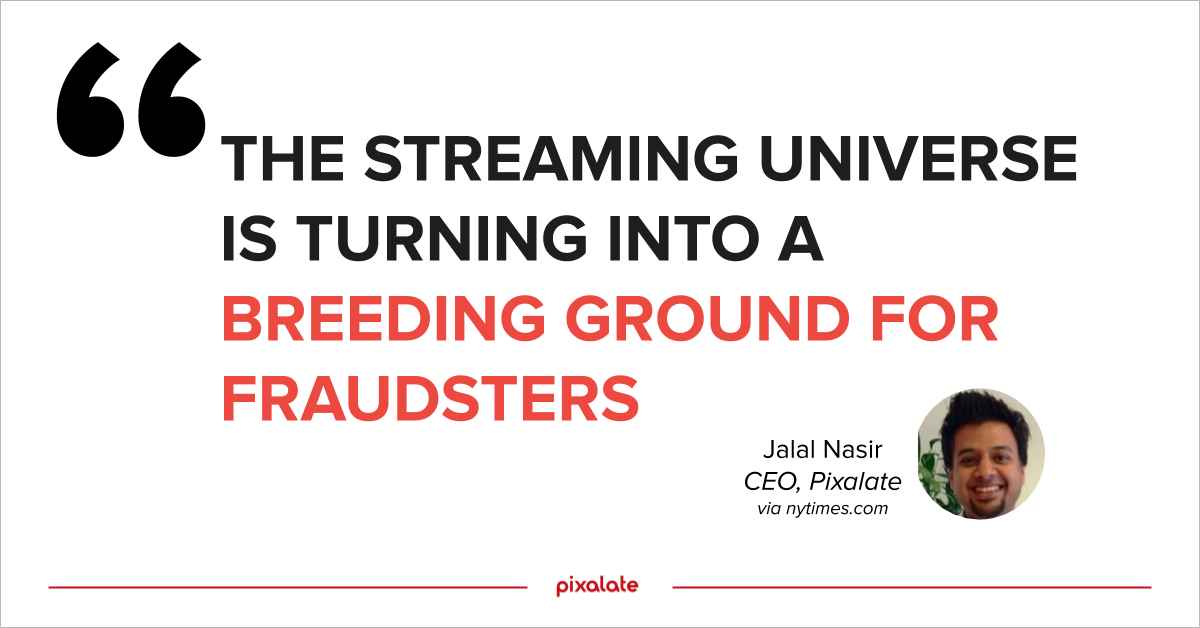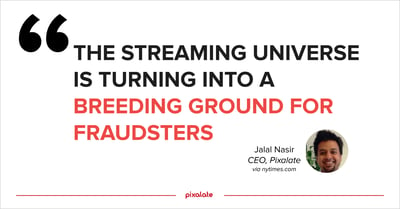
October 25, 2019 — By: Tiffany Hsu, The New York Times
"A spate of streaming services are on their way from major tech and entertainment companies, promising viewers a trove of binge-worthy new shows and movies," wrote the New York Times in a recent piece examining the burgeoning Connected TV (CTV) and over-the-top (OTT) streaming space.
"There’s something for advertisers, too: your personal data," the NYT added.

"The streaming universe is turning into 'a breeding ground for fraudsters and others who might abuse the system,'" Jalal Nasir, Pixalate CEO, said to the NYT.
"'There’s a huge, huge disconnect, because the data collection standards are very loosey-goosey,' Mr. Nasir said. 'There’s so much money involved, so many players in the industry, but also a lack of standardization and education for regulators, consumers and advertisers.'”
Read the whole article in The New York Times, which deep-dives into the shift in advertising toward streaming TV and its impact on consumer privacy and data regulation.
*By entering your email address and clicking Subscribe, you are agreeing to our Terms of Use and Privacy Policy.
These Stories on Thought Leadership
*By entering your email address and clicking Subscribe, you are agreeing to our Terms of Use and Privacy Policy.

Disclaimer: The content of this page reflects Pixalate’s opinions with respect to the factors that Pixalate believes can be useful to the digital media industry. Any proprietary data shared is grounded in Pixalate’s proprietary technology and analytics, which Pixalate is continuously evaluating and updating. Any references to outside sources should not be construed as endorsements. Pixalate’s opinions are just that - opinion, not facts or guarantees.
Per the MRC, “'Fraud' is not intended to represent fraud as defined in various laws, statutes and ordinances or as conventionally used in U.S. Court or other legal proceedings, but rather a custom definition strictly for advertising measurement purposes. Also per the MRC, “‘Invalid Traffic’ is defined generally as traffic that does not meet certain ad serving quality or completeness criteria, or otherwise does not represent legitimate ad traffic that should be included in measurement counts. Among the reasons why ad traffic may be deemed invalid is it is a result of non-human traffic (spiders, bots, etc.), or activity designed to produce fraudulent traffic.”

